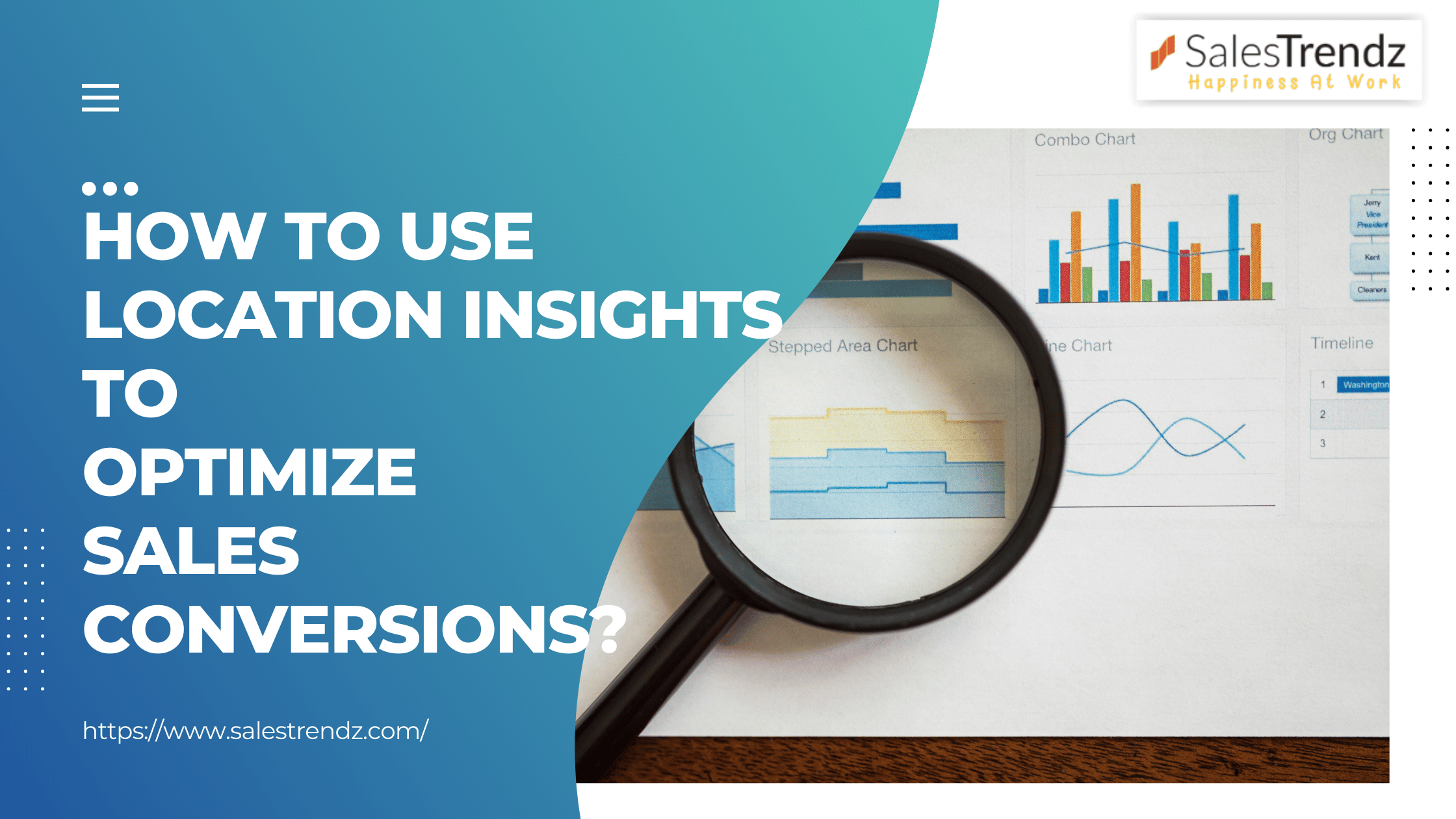How to Use Location Insights to Optimize Sales Conversions?

In the age of data-driven decision-making, sales leaders are constantly seeking new ways to improve performance and drive better results. One powerful, yet often underutilized, tool in a sales manager’s arsenal is location intelligence—the use of geographic and spatial data to gain insights that enable strategic actions.
For organizations with field sales teams, location insights can be the game-changer that boosts productivity, reduces costs, and most importantly, increases sales conversions.
By understanding the “where” behind your customer interactions, you can strategically place your reps, optimize routes, uncover new opportunities, and outperform your competition.
In this blog post we will dive into how location insights can optimize sales conversions and how your organization can effectively harness this potential.
Understanding What Location Insights Are
Location insights refer to actionable intelligence derived from analyzing geographic data such as:
- Customer locations
- Sales rep routes and visit frequency
- Territory boundaries
- Sales performance by region
- Demographic and market data
When visualized through maps and dashboards, this data reveals patterns and trends that are invisible in spreadsheets alone. These insights and information can significantly influence how you allocate resources and make strategic decisions on the ground.
Optimizing Sales Territories for Maximum Coverage
Poorly planned territories can lead to missed opportunities, overworked reps, and uneven sales performance. Location insights allow sales managers to:
- Balance workload by ensuring reps have equitable access to prospects and clients
- Reduce overlap and competition between reps
- Improve response times by assigning reps to territories that minimize travel time
By using geographic data to define logical, efficient sales territories, you can maximize coverage, reduce redundancy, and help sales reps focus on selling rather than driving.
Boost Productivity with Route Optimization
Field sales is all about face time with customers. The more meetings a rep can book in a day, the higher the potential conversions.
Location intelligence tools helps to plan optimized routes that reduce travel time and fuel costs. It also allows for dynamic rerouting based on traffic or schedule changes. You can also Identify clusters of customers or leads to plan high-impact visits.
When reps are given a strategically optimized route plan they spend less time on the road and more time with prospects, conversions naturally increase.
Prioritize High-Value Opportunities
Not all leads are created equal. Location insights can help identify high-potential areas based on:
- Past sales data
- Market saturation
- Demographic trends
- Competitor presence
Sales managers can direct reps to focus efforts on locations that have historically yielded better results or show signs of high demand. This targeted approach boosts the chances of conversion and maximizes ROI from sales activities.
Uncover Hidden Opportunities in Existing Data
Sales teams often have a treasure trove of unused or underutilized location data. By layering customer records on a map, managers can:
- Identify under-penetrated areas within assigned territories
- Spot cross-sell or upsell opportunities nearby existing clients
- Locate “cold zones” where reps haven’t visited in a while
These insights can guide outreach campaigns, prevent churn, and expand the sales pipeline.
Track Rep Activity and Accountability
Modern location intelligence platforms integrate GPS tracking and mobile CRM to provide real-time visibility into rep movements. This can be used to:
- Ensure reps are visiting the right clients
- Track time spent per visit
- Validate meeting outcomes
This transparency not only improves accountability but also helps managers provide better coaching and support to reps.
Improve Customer Experience with Proximity-Based Engagement
Proximity marketing is not just for retailers. Field sales teams can use similar tactics to:
- Notify reps when they’re near a high-value customer
- Suggest drop-ins or follow-ups with nearby prospects
- Trigger reminders for inactive accounts within a given area
Timely, personalized engagements based on proximity can significantly improve customer experience and lead to higher conversion rates.
Leverage Competitive Intelligence
Knowing where your competitors are active helps you avoid saturated areas and focus on untapped opportunities. Location insights can:
- Map competitor locations
- Overlay market share data by region
- Analyze regional price variations or promotions
With this intelligence, sales teams can craft more compelling pitches and go on the offensive where competitors are weak.
Align Marketing and Sales Efforts Geographically
Sales and marketing alignment becomes more effective when both functions operate with the same geographic understanding. Location insights enable:
- Geo-targeted marketing campaigns to support field efforts
- Regional events and promotions that resonate with local needs
- Localized content and messaging tailored to specific markets
This synergy drives brand awareness in targeted locations and supports reps in closing deals more efficiently.
Use Real-Time Dashboards for Informed Decision-Making
Modern location analytics platforms offer dashboards that combine maps, KPIs, and trend lines in one place. Sales leaders can:
- Monitor territory performance in real time
- Make data-driven decisions about team deployment
- Identify bottlenecks or high-performing areas quickly
These visualizations turn static reports into dynamic tools for decision-making.
To sum up: Start Small, Think Big
Location intelligence doesn’t require a massive investment to get started. Even simple mapping of customer addresses in Google Maps can yield powerful insights. The key is to start integrating location data into everyday sales decisions and then scale your efforts with more advanced tools over time.
For sales managers and organizations with field sales teams, location insights are no longer a nice-to-have—they’re a competitive advantage. By leveraging the “where” alongside the “who” and “what,” you can empower your reps to work smarter, cover more ground, and close more deals.
So ask yourself: are you making the most of your team’s location data?
Ready to optimize your field sales operations with location insights? Let’s talk tools, data strategies, and best practices to get you started.


